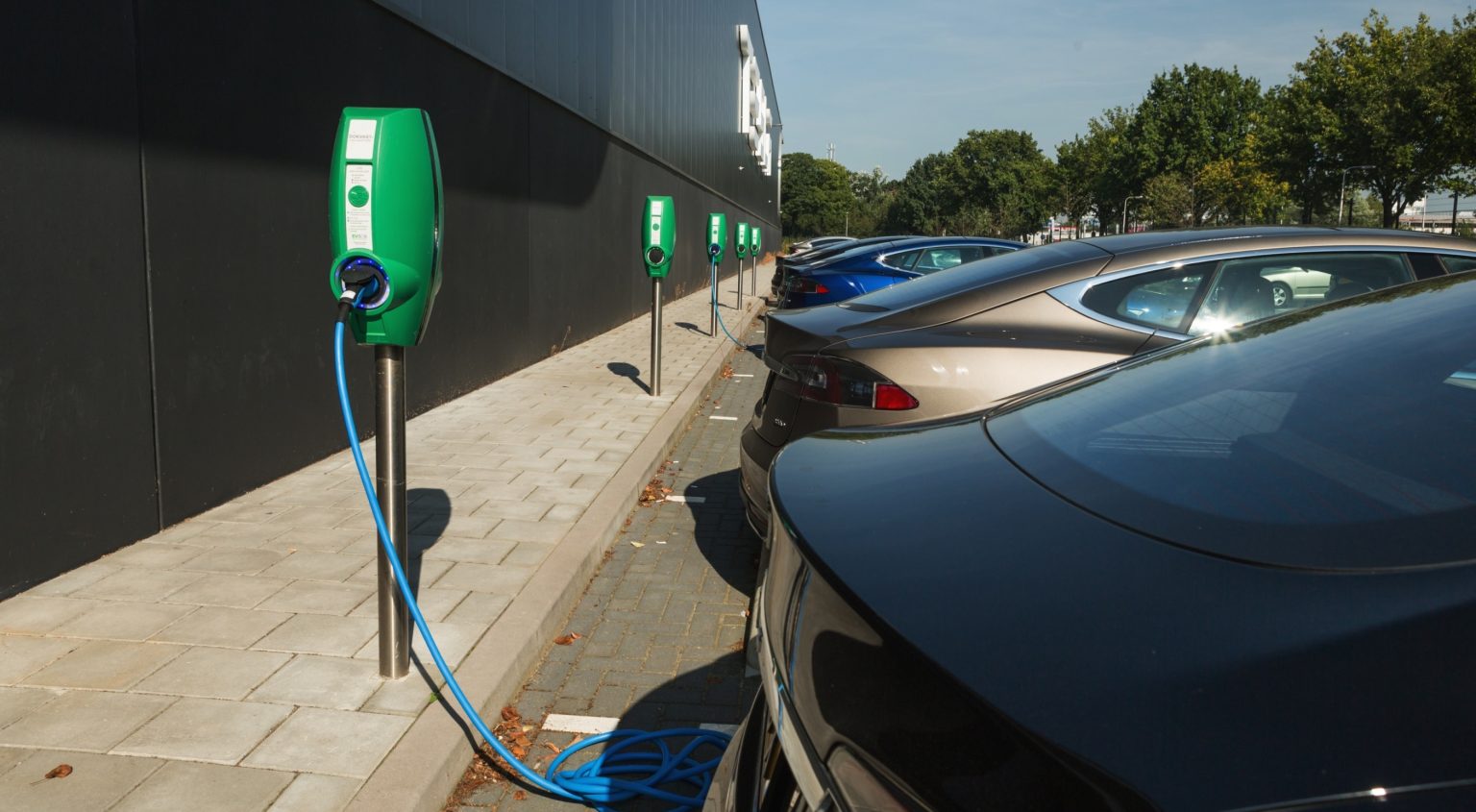In recent years, the auto industry has made great strides toward designing electric vehicles (EVs) that compete with conventional gasoline-powered cars.
When it comes to acceleration, handling and safety, many EVs now perform as well as or better than their internal combustion engine counterparts.
And, while the range of current-generation electric vehicles typically tops out at about 100 miles, next-generation, longer-range vehicles are hitting the market. The Chevy Bolt and Tesla 3 both travel more than 200 miles on a fully charged battery. The price of electric vehicles has come down, too.
For automotive engineers, one major challenge remains: How do you charge an EV as quickly as you can fill up a gas tank?
“We need to get much closer to gasoline refueling times,” says Richard “Barney” Carlson, a research engineer with Idaho National Laboratory’s electric vehicles group. Carlson is part of a Department of Energy team helping industry overcome obstacles to faster EV charging times.
A new report funded by DOE’s Vehicle Technologies Office highlights technical gaps for extreme fast charging at the battery, vehicle and infrastructure levels. The office also announced up to $15 million for new research projects to address these challenges.
Right now, the fastest available chargers for most vehicles, known as DC fast charging, is a 50 kW system capable of charging a typical EV battery in under an hour. Tesla and Hyundai have developed vehicles capable of plugging into 120 kW charging systems, reducing battery charging times to half an hour or less.
One technology, extreme fast charging, could offer a solution. Extreme fast chargers would deliver 350 kW of power and would charge a vehicle’s battery (depending on its size) to 80 percent capacity in 5 to 10 minutes.
Even for a dedicated EV driver, extreme fast charging would probably be used sparingly. The most likely scenario for high power charging would be during long trips, perhaps at an interstate highway rest stop. “We would still expect that 90 percent of charging would be done at home, overnight,” Carlson said.
Challenge: Enormous Electricity Draw
While the technology may be only three to five years from reaching the public—the 350 kW capable Porsche Mission E is due out in 2020—a host of technical challenges remains to handle that much power.
For starters, charging an EV at 350 kW is a similar load on the electric grid as a supermarket or hotel. That much electricity requires power companies to invest in expensive distribution infrastructure.
The question is twofold: How does the power company make that infrastructure investment economical? And, how does the power company generate reliable power given the intermittent nature of electric vehicle charging?
One possible answer to both questions is a large stationary battery at the charging station.
The stationary battery would serve as a buffer between the electric vehicle and the grid. When it’s time to charge the EV, the stationary battery provides most of the power. Instead of the power company providing big surges of electricity during charging events, electricity from the grid slowly recharges the stationary battery throughout the day.
That way, investors in charging stations might avoid or reduce the “demand charges” that power companies sometimes impose on customers who have high power demands
These stationary batteries could even receive additional charge from distributed renewable energy resources, such as solar panels.
Appropriately sizing the stationary battery will be key, says Eric Dufek, a researcher with INL’s Energy Storage group. “Mainly, it’s a cost thing,” he said. “Utilities really plan based on how much power you deliver and what your peak needs are. If you don’t appropriately size your battery, then your demand charges are going to be high.”
Challenge: Robust Component Requirements
Another extreme fast charging challenge is the charging equipment itself. Delivering that much power requires more substantial electronic components that can handle the load. This likely includes not only thicker cables and insulation, but also a liquid cooling system to dissipate the heat generated by the transfer of all that power.
Such a cooling system, plus all of the heavy-duty electronic components, would add expense to the charging system.
EV batteries will also need to be more robust. For starters, battery pack voltage will likely need to increase from the 400 volts found in today’s EVs to 800 or 1,000 volts. Exactly how the high-voltage charging control unit affects battery life is another question.
Other electronics in the vehicle will need a corresponding upgrade. “In most vehicles, the power electronics are designed for 600 volts or less,” Carlson says. “Now we would need power electronics to handle up to 1,200 volts, which adds cost and complexity.”
National Laboratory Resources
Expertise at America’s national laboratories can help industry understand and navigate such challenges. For example, INL researchers are studying and addressing technical issues, but also forecasting economic and logistical challenges.
INL worked with Argonne National Laboratory and the National Renewable Energy Laboratory to identify technical gaps to implementing extreme fast charging in the United States. The findings are detailed in DOE’s new report and in a series of four papers being published this week by the Journal of Power Sources.
INL’s work includes a new study that is gathering information about how people use conventional gas stations and 50 kW DC fast charging stations today. Researchers and industry can use those data to learn more about how different types of EV users—the public, taxis, delivery fleets, etc.—will use extreme fast charging in the future.
“We’re collecting all the background data that we need to make informed decisions,” Dufek said.
That way, when extreme fast charging is ready for the marketplace, INL researchers will have helped topple some of the barriers to its widespread adoption by the public.






